Fourth of a five-part series.
The red carpet cuts a path down the shiny linoleum in the cafeteria, separating the fourth-graders huddled on the floor.
It adds a bit of pomp and circumstance to this event, where medals and praise await students deemed the “Jaguar of the Month” in each class. At Sunrise Acres Elementary School, the designation isn’t just a ribbon or certificate handed to the chosen students. Here, the title comes with a brief ceremony — attended by loved ones if possible — and public recognition.
Assistant Principal Michael Dobbyn grabs the microphone and kicks off the January assembly, addressing the school’s second-oldest group of students. He tells them teachers and administrators are always looking for the best leaders. That could be students who offer unsolicited help. Or show compassion to others. Or give their all in the classroom.
At first blush, the commentary may seem to contradict the spirit of the school’s guiding quote, which is painted in black letters on a front office wall: “A leader does the right thing even when no one is watching.”
But staff at this east Las Vegas school consider positive reinforcement — whether for healthy habits, model behavior or stellar work — vital for their students, especially those who lack parental support at home. So they watch and they listen. And then they commend.
First up is Alejandro.
“He’s willing to learn and always tries his best even in the midst of failure,” Dobbyn says.
Next is Tiana.
“She’s known as a leader in science and writing. She works hard on SBAC prep” — a nod to the state’s standardized test — “and writing.”
And then Luca.
“His behavior is perfect inside and outside the classroom.”
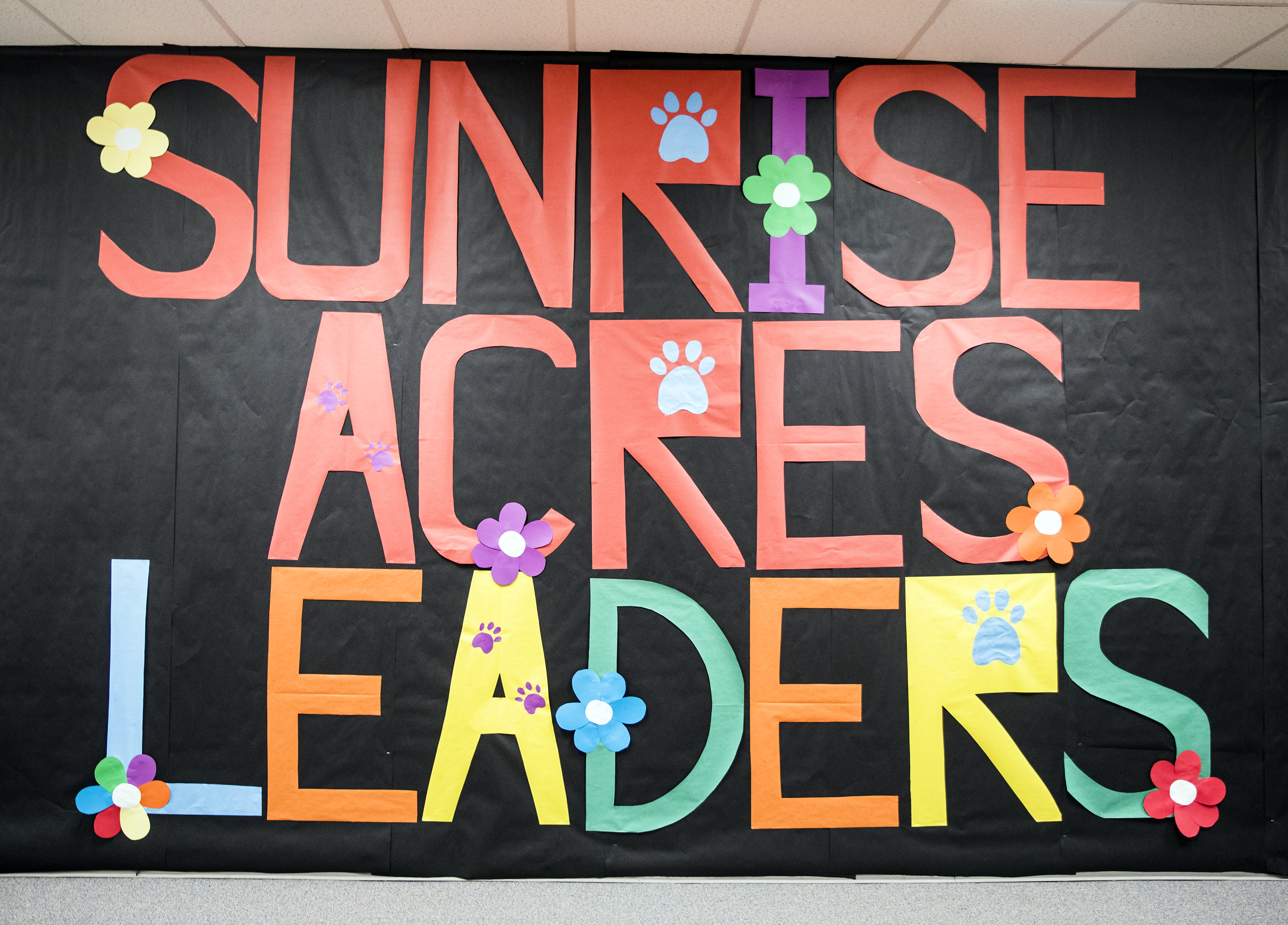
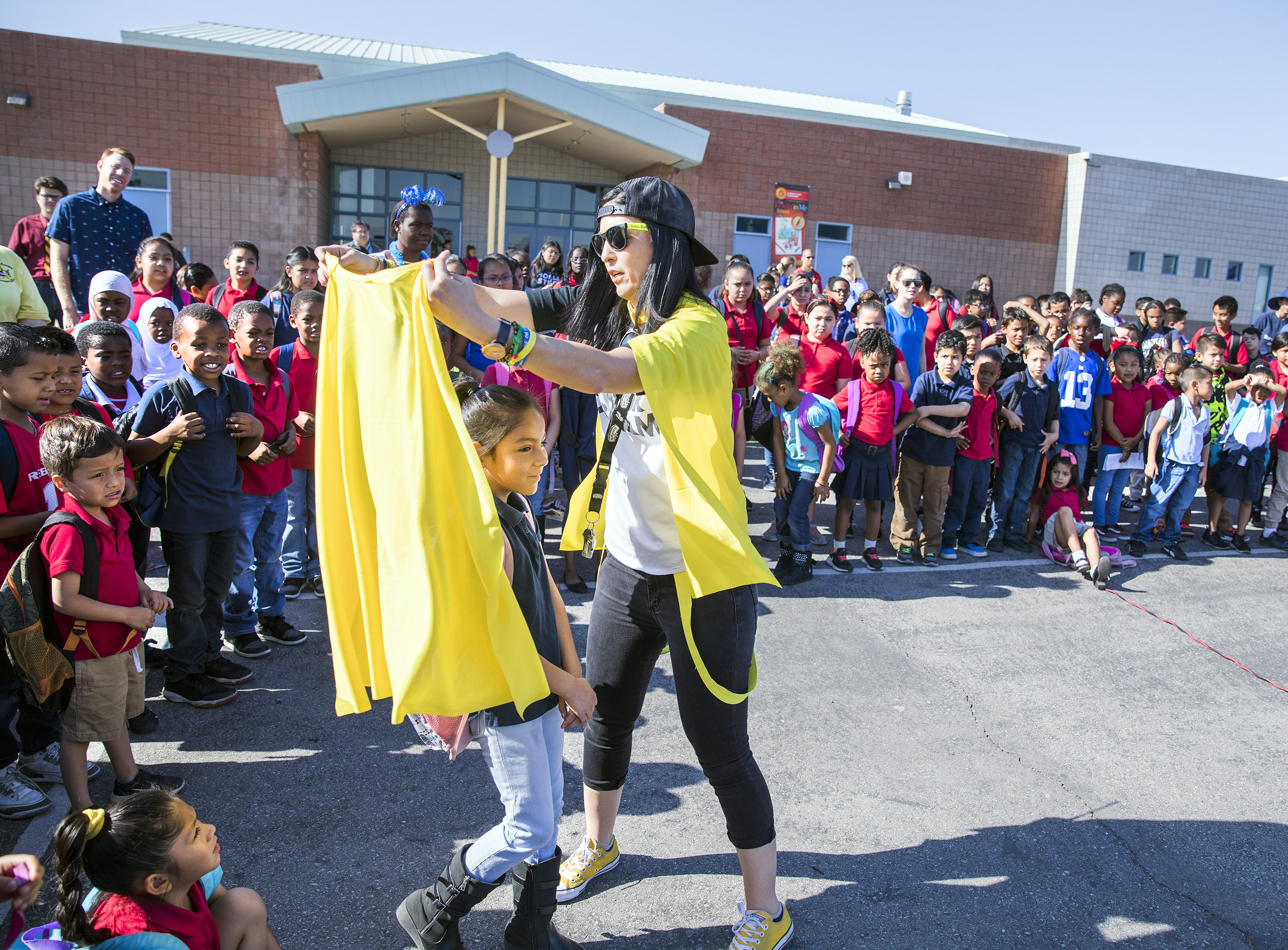
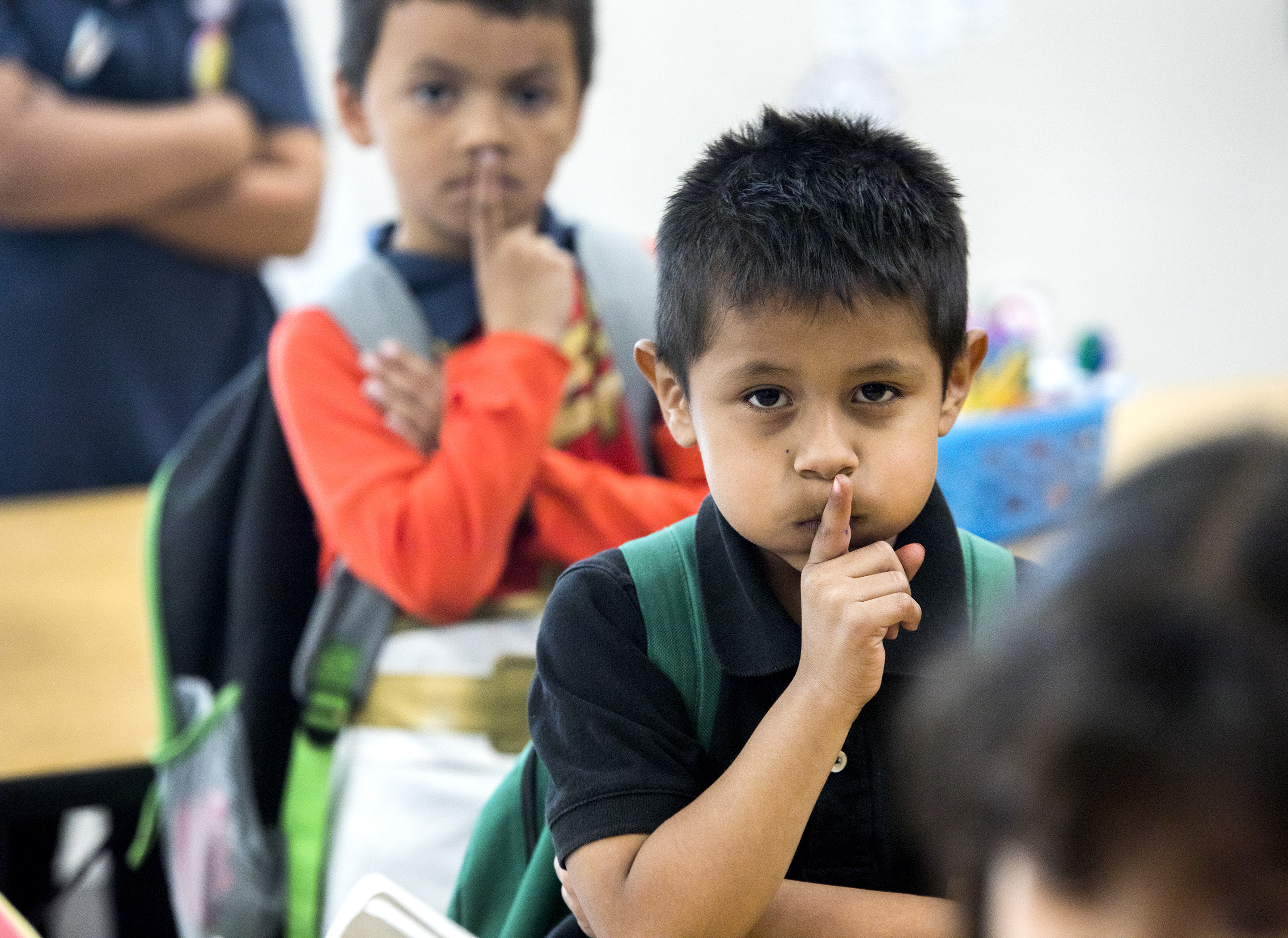
Top photo: A homemade banner hangs in the school cafeteria on March 9, 2018. Middle: School counselor Megan Gutierrez honors a student during a morning ceremony on April 27, 2018. Bottom: Kindergarten students prepare to exit the classroom on Oct. 25, 2017.
The monthly red-carpet affair gives students and staff time to reflect on the good, rather than dwell on the daily challenges. Put any 800-some energetic, fidgety children in one place, and there’s bound to be mischief and insubordination. Elementary staff, in turn, walk a fine line as they try to keep the impressionable children eager to learn — and hopeful for their futures — while maintaining order in the classroom.
Add students’ learning difficulties and unstable home lives to the mix, and it’s no wonder Assistant Principal Michael Dobbyn logs 14,000 steps before he even leaves school each day. There are always disputes to settle, children to soothe and others to reprimand.
Actions and consequences
A hush falls over a fourth-grade class as Principal Margarita Gamboa enters one afternoon in October. She makes a beeline for the whiteboard, grabs a green marker and scrawls three words that have become her catchphrase at the school.
Heads crane from desks as students try to decipher what their principal is writing.
“What does it say?” she asks.
“Seeking to understand,” they respond in unison.
“That’s what I’m here for,” Gamboa says. “I’m seeking to understand.”
This could have been a straight-to-the-point scolding for their misbehavior the previous day. But Gamboa takes a different tack. She starts by talking about cosmic bowling and how good attendance, hard work at school and respectful behavior can land students a shot at that reward-based field trip.
“Life is about choices,” she says, drawing a straight line on the board as well as a squiggly line. “You either go the positive road or you go the kind of road that takes you back to the bottom.”
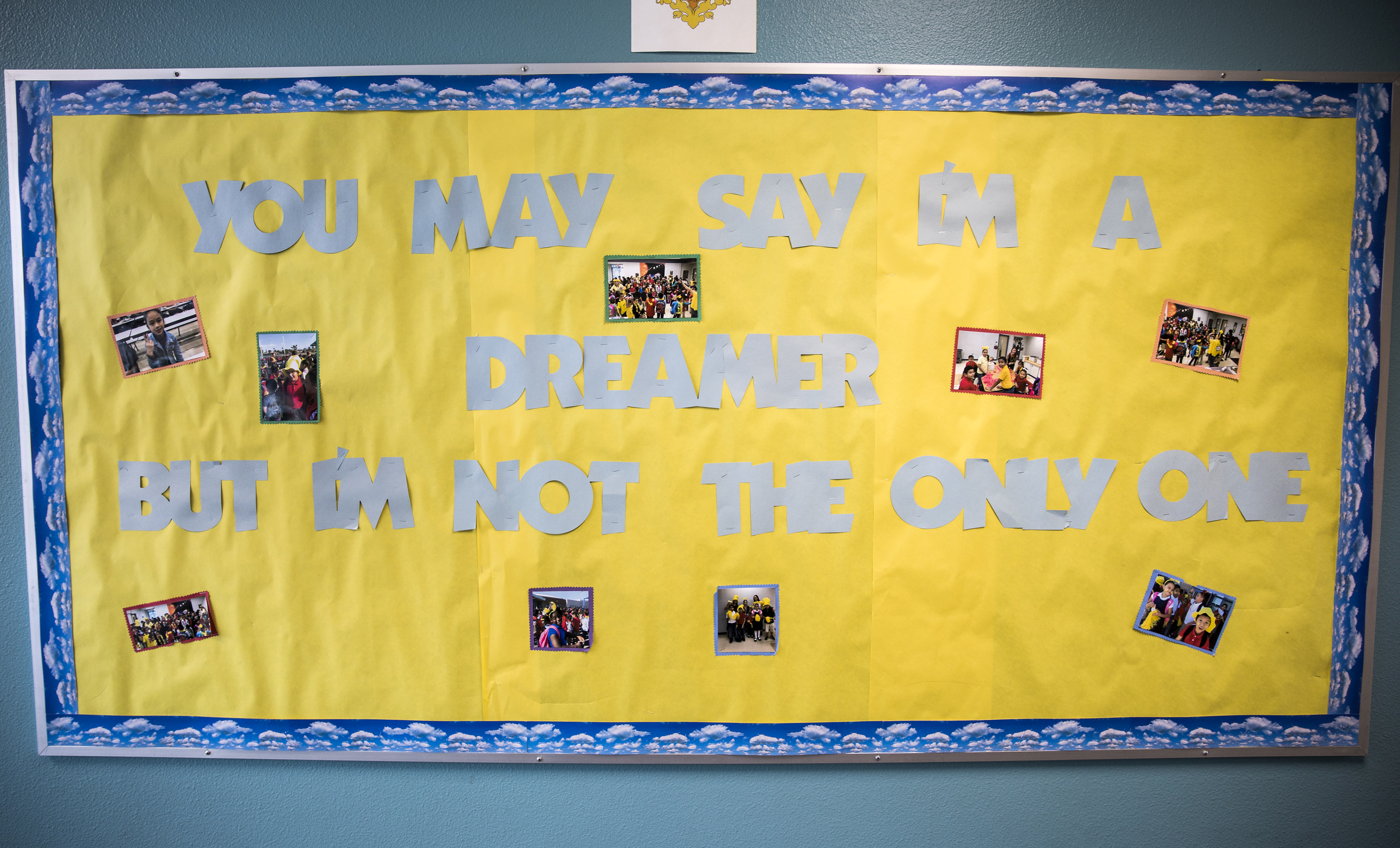
Many of them had taken a road resembling the squiggly line when a substitute teacher led their class a day earlier. Word trickled back to the office that students had thrown pencils and books and hurled negative comments throughout the day.
“A substitute teacher is a guest at our school,” Gamboa says, her voice growing firmer. “I want you to think: How would you treat guests at home?”
For 50 minutes, Gamboa speaks to the class in a way that’s more of a lesson than a lecture. She walks them through the consequences of bad decisions — a cycle that could take students from missing recess to office referrals to expulsion to behavior school and, ultimately, to jail and prison.
A rare silence engulfs the room after Gamboa points to the life pathways drawn on the board. She asks which route they’d prefer to take.
“We think that you’re great kids. You’re great students,” she tells them. “Sometimes you make bad mistakes. You need to learn from those mistakes.”
The students’ first major test will come the next week when the class has another substitute teacher. Their teacher, Benjamin Bensoua, and others will be accompanying 36 fifth-graders to SEACAMP in San Diego — an experience staff know for many students who attend might be their first trip outside Southern Nevada. The students light up at the mention of SEACAMP. It could be them gearing up for the trip this time next year, but much of that decision comes down to behavior and academics.
Before she leaves, Gamboa asks the students if they have any questions or comments.
A boy raises his hand.
“Once my dad was in jail,” he announces.
That father’s situation is exactly what school staff hope their students can avoid. They don’t want Sunrise Acres to be the starting ground for problems that fester and fester as a child grows into an adult, leading to a life intertwined with the criminal-justice system.
That’s why the hallways have street signs boasting college names and photos of students holding boards that display their career aspirations — nurse, teacher, microbiologist, pilot, paramedic and robotics engineer. It all plays into a subtle theme coursing through the building, which is to make students believe in themselves and their dreams even when their circumstances may seem insurmountable.
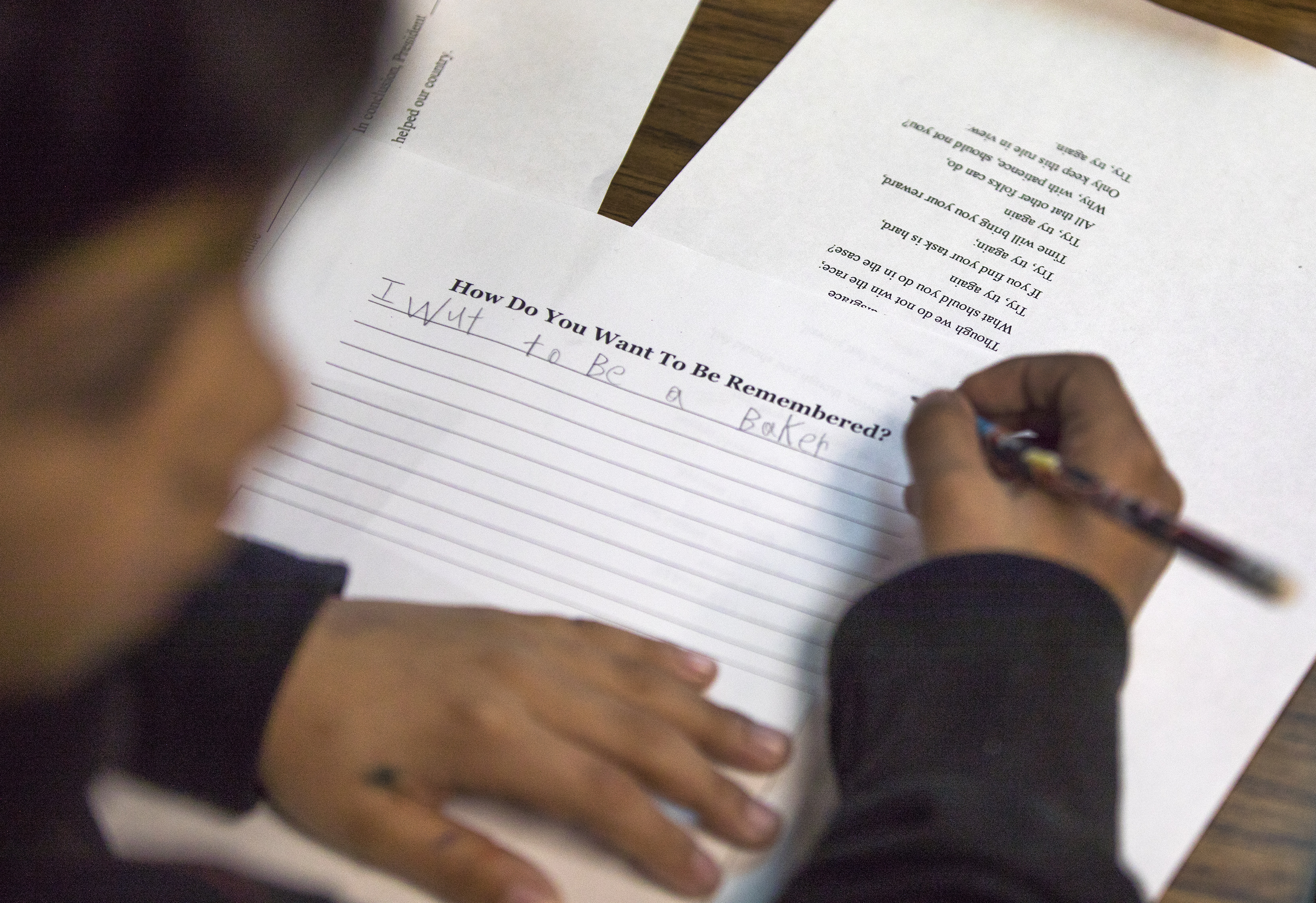
The behavior reality
The positive reinforcement doesn’t make Sunrise Acres immune to behavior problems, though. The school logged 211 behavior incidents over the course of the year — and those are just the ones that made it into the computer system. Ninety-eight incidents were labeled “unacceptable school behavior,” which can include everything from throwing a chair to leaving a classroom without permission. But there were also 23 instances of fighting, 22 of bullying, 18 of aggressive behavior, nine of hitting, seven of cheating or plagiarism and seven of inappropriate touching, among other infractions.
Of those offenses, 103 triggered a required conference with the student’s parents or guardians to address the behavior. School administrators only gave three suspensions — a form of punishment saved for the most egregious behavior.
But Dobbyn, who handles many of the behavioral issues as assistant principal, says the numbers don’t tell the whole story. Unless administrators deem something a major incident, they don’t enter it into the behavior database.
Dobbyn meets with four students per day, on average, for misbehavior and informal coaching. He suspects some problems stem from social skills students aren’t necessarily learning at home.
“They’re not really taught how to resolve conflicts,” he says. “That’s not just Las Vegas, but that’s everywhere.”
It's nearly impossible to determine how Sunrise Acres' behavior patterns compare to other elementary schools. The district doesn't require elementary schools to record detailed behavior data in any uniform way.
Numbers aside, they all know poor behavior then trickles into the school environment. Dobbyn has a scar on his chest to prove it. A kindergarten student lashed out at him earlier this year, leaving a lasting reminder.
Sunrise Acres administrators, however, prefer to focus on the “why” rather than the “what.” They know many students are entering the building with at least one adverse childhood experience — called an “ACE” in the clinical world — which can affect development and cause behavior problems. Some examples include witnessing domestic violence or drug use, experiencing abuse or neglect, and having a fractured family or incarcerated loved one.
“I can’t throw the book at them,” Gamboa says. “They are coming with so many other outside environmental factors.”
So they try to dig deeper, gathering information from teachers, the counselor and social worker, to piece together a theory about what may be driving a student’s misbehavior. Then they do conferences with the student and sometimes the parents as well to correct it.
Above all, Gamboa and Dobbyn say they want to keep kids in school, where they belong. Although some educators may favor a more heavy-handed approach, they think a dose of compassion can go a long way.
And in trying moments, ones that could drive teachers away from the profession, there’s often an indication of the good that exists in even the most troubled students. Like the time Sam — a second-grader prone to physical outbursts — looked Dobbyn in the eye after kicking and hitting him.
“When we had him calmed down, he turned to me and he had a tear in his eye and he says, ‘I couldn’t help it. I’m so sorry. I didn’t know what I was doing. I’m sorry,’” Dobbyn recalls. “I sat there and I was crying with him, and he gave me a hug.”
Staff, of course, hope it doesn’t get to that point. The school has several initiatives to curb misbehavior while fostering the social and emotional skills some students lack.
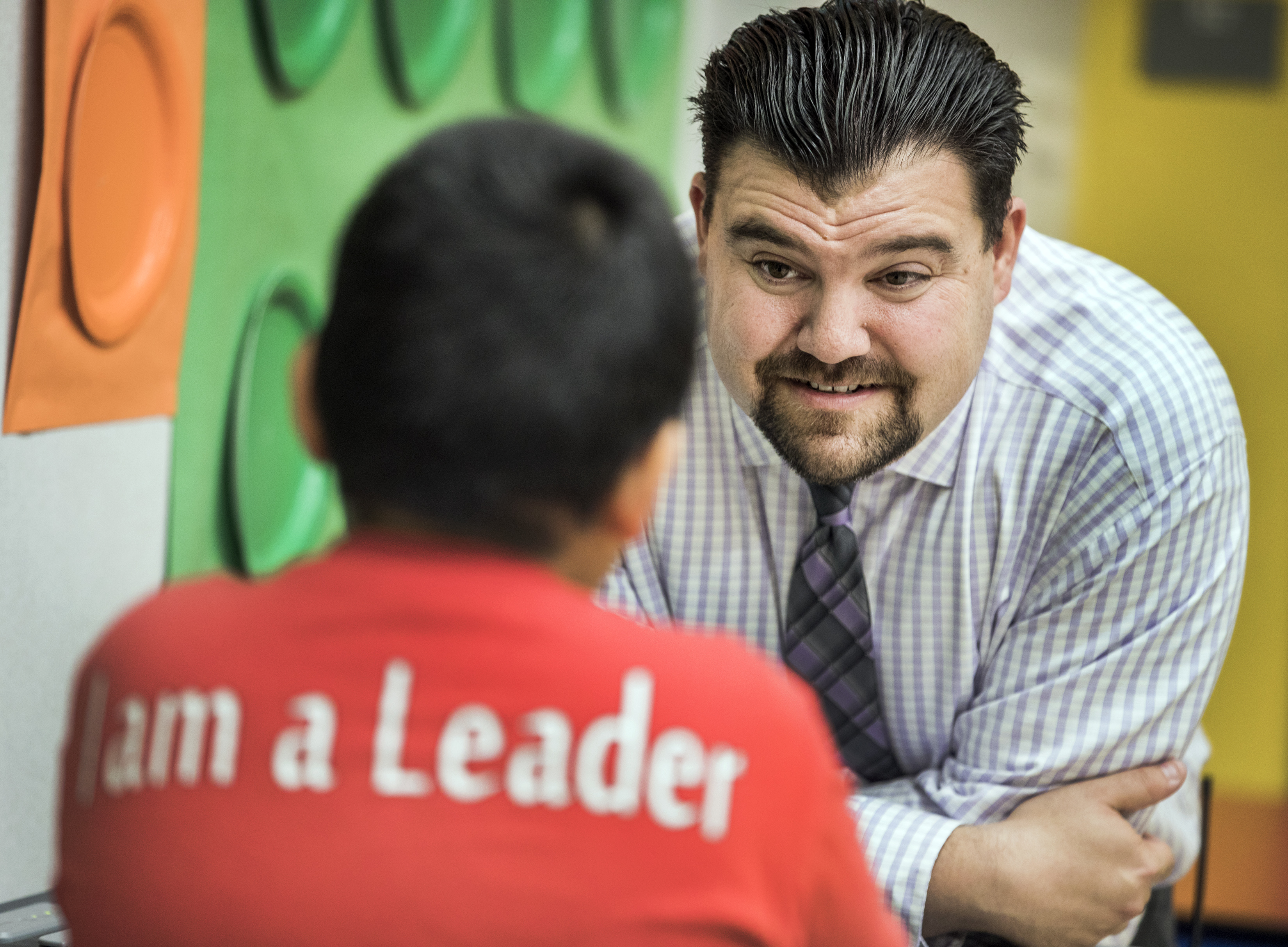
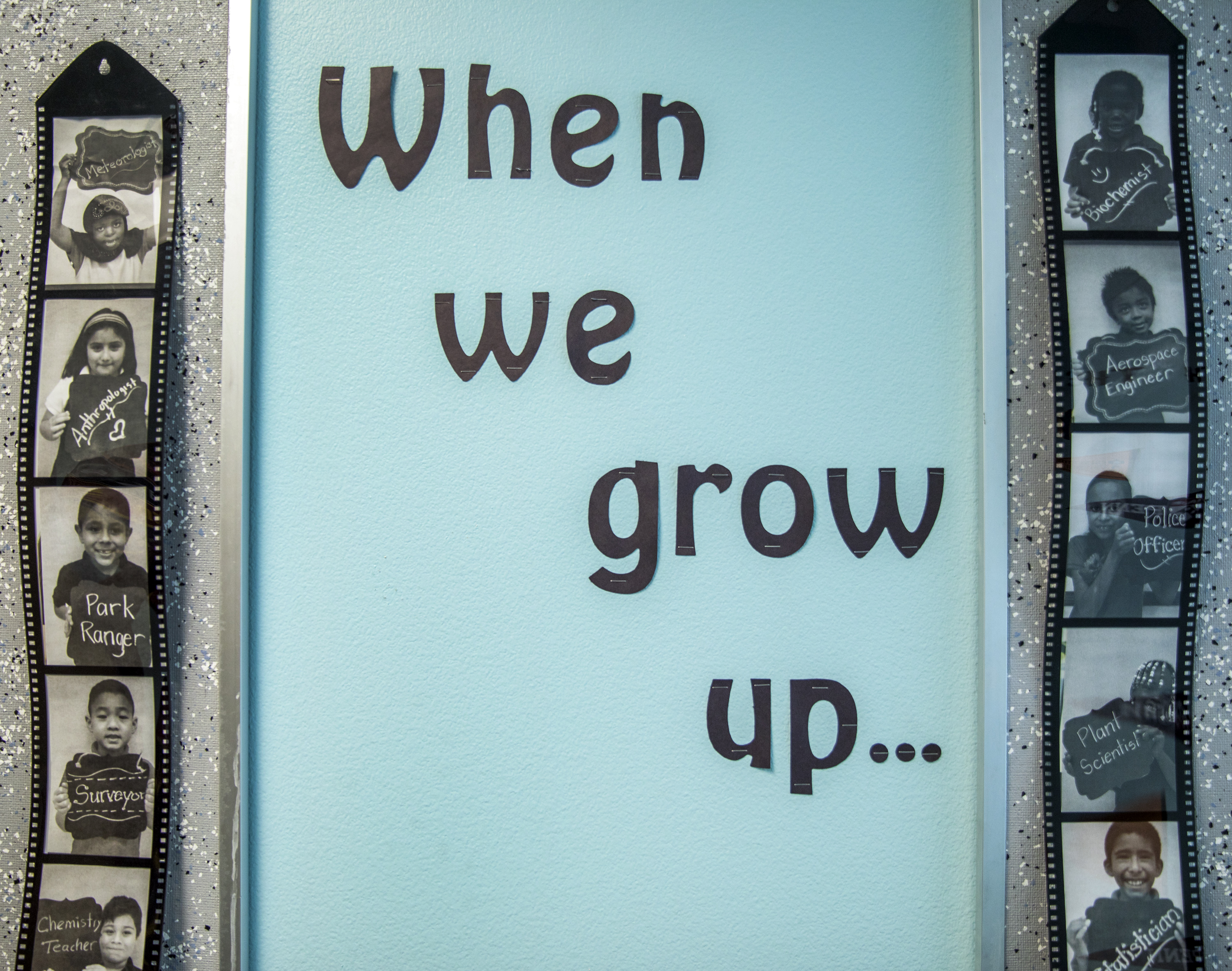
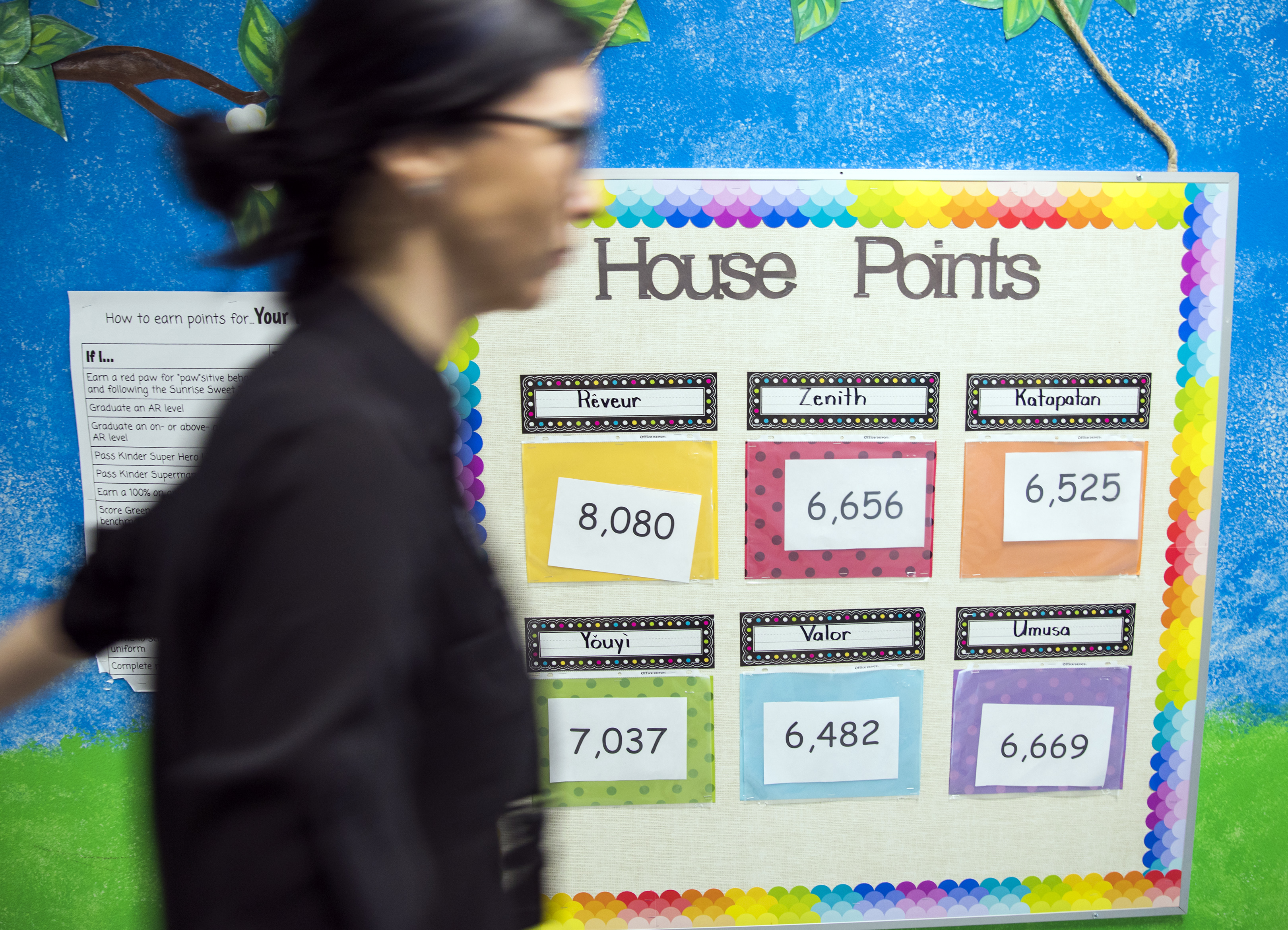
Top photo: Robert Rosenblatt, right, a learning strategist, talks to a student on March 22, 2018. Middle: Photos of students sharing their career aspirations decorate the hallway on March 9, 2018. Bottom: School counselor Megan Gutierrez walks past a sign keeping track of house points on April 12, 2018.
One is a program called “The Leader in Me,” designed by a North Carolina principal charged with turning around a failing school. The program weaves leadership and problem-solving skills into the school’s curriculum through its “seven healthy habits”:
- Be proactive. (Take initiative and choose your own actions and attitude.)
- Begin with the end in mind. (Set goals and do things with meaning.)
- Put first things first. (Be disciplined, organized and prioritize the important tasks.)
- Think win-win. (Balance your wants with consideration for others’ wants as well.)
- Seek first to understand, then to be understood. (Be a good listener and then a good explainer.)
- Synergize. (Get along with others and learn from them.)
- Sharpen the saw. (Take care of your body and spend time with loved ones.)
Sunrise Acres also launched a “house system” this year that sorts students and staff into six smaller groups. (Think “Harry Potter” and the four houses at the fictional Hogwarts School of Witchcraft and Wizardry.)
Robert Rosenblatt, one of the school’s learning strategists, became the unofficial ambassador of the house concept, which gives students a chance to form bonds with different teachers and staff members . He often dons head-to-toe purple — an ode to his house known as “Umusa” — and leads pep rally-style morning ceremonies to bolster enthusiasm for the new initiative.
As a reward for good behavior and academic feats, students earn paw prints, which count toward house points. The house with the most points at certain intervals during the year wins celebrations, such as an ultimate recess or dance party.
“Part of academics is teaching them how to be good people,” he says.
Those initiatives won’t gain any ground, however, if students aren’t actually in school.
Enter the Truancy Diversion Program. Sunrise Acres paid $4,000 to bring the program, which is run by Clark County District Court, to its campus this year as a way to combat absenteeism and tardiness. Thirteen percent of the school’s students are chronically absent and falling further behind academically with each missed day.
Those students visit Portable 12 on Monday mornings to check in with community members who have volunteered to serve as family advocates and judges. The professional volunteers work with teachers, parents and students to make sure the children arrive each day ready to learn. Their collective goal is to keep kids in school and out of the juvenile-justice system.
By April, the program counts 20 Sunrise Acres students among its participants. Several have graduated. But on this day they’re quizzing a boy who missed school the Tuesday after spring break. His parents didn’t notify the school, making it an unexcused absence.
He also hasn’t been completing homework, per a teacher’s note attached to his file.
“I don’t have pencils at home,” he tells them.
Kimmie Webb, the volunteer judge, hands him crayons and pencils — a small offering that could change his trajectory.
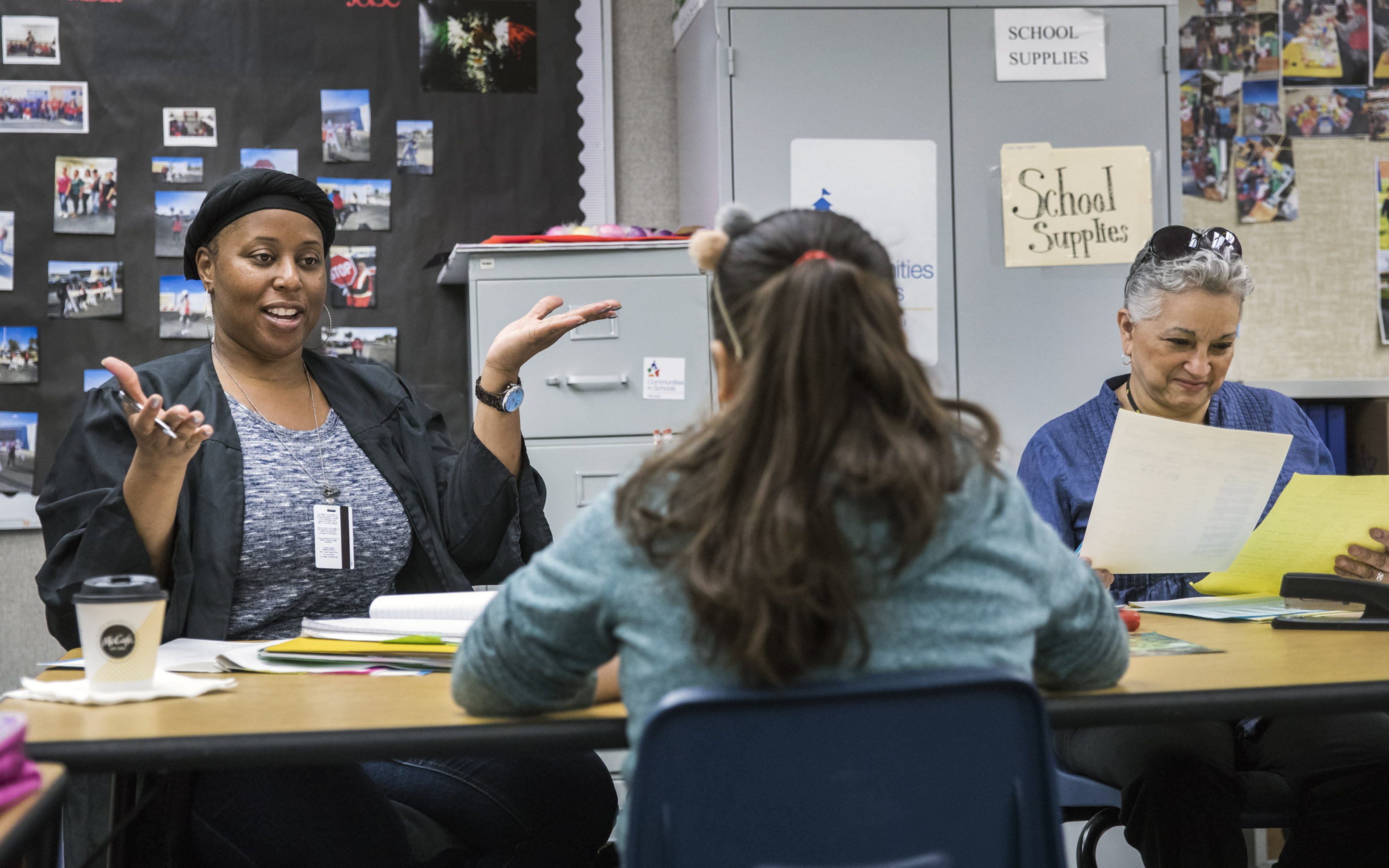
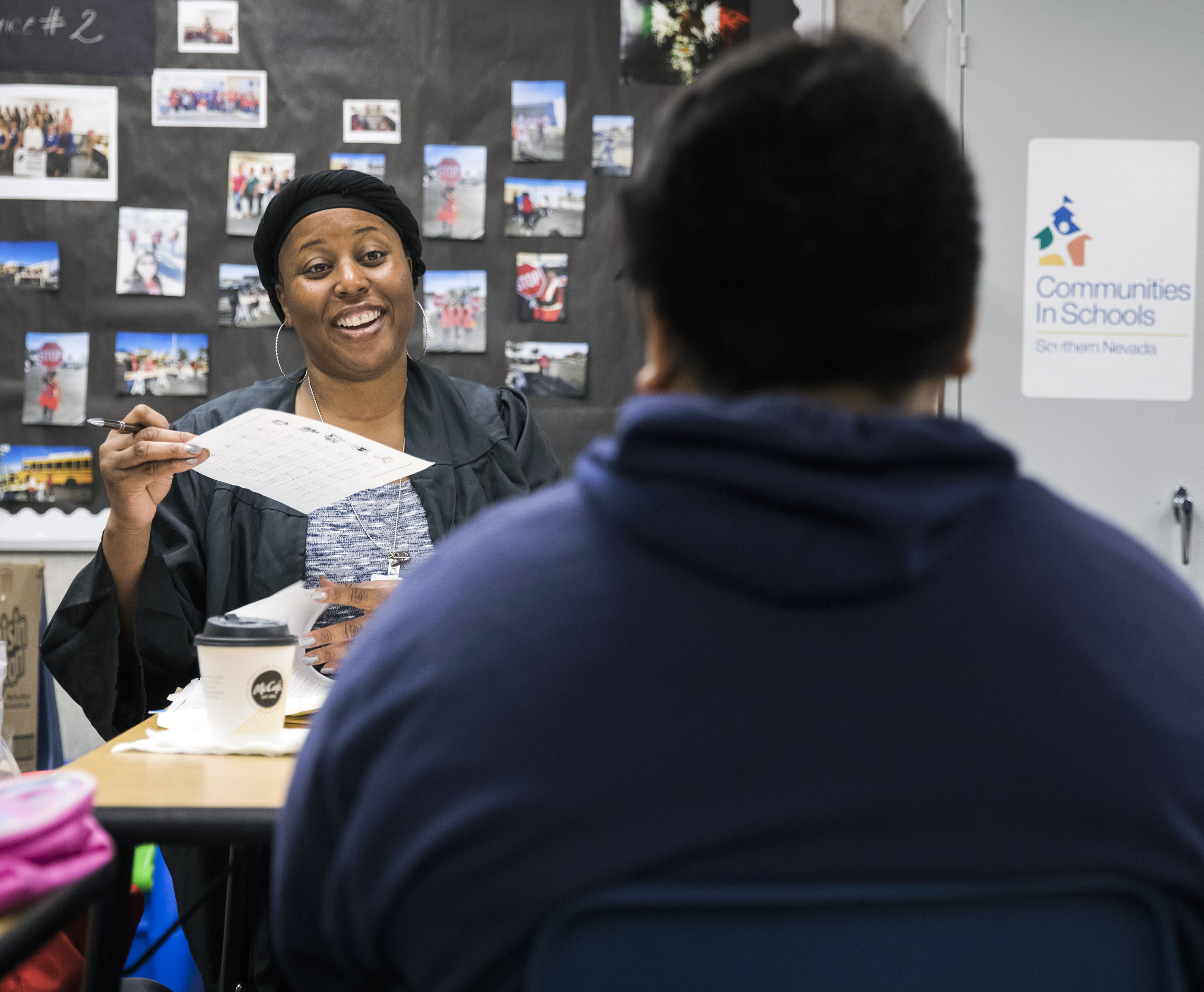
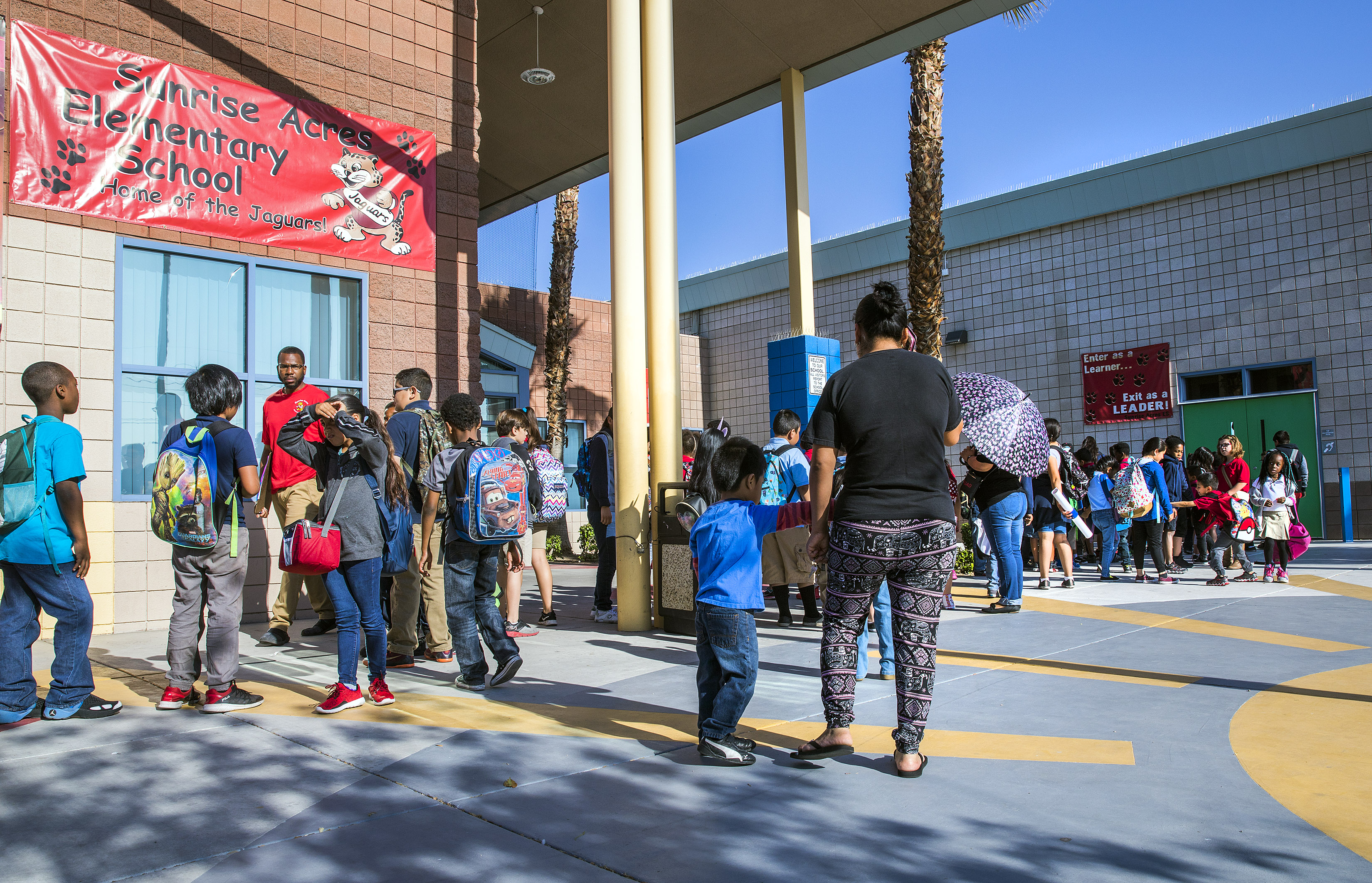
Top and middle photos: Kimmie Webb, left, with the Truancy Diversion Program talks to students about their improved attendance records on April 16, 2018. Bottom: Students wait in line for breakfast on April 27, 2018.
Rough starts and uncertain futures
Eleven-year-old Jordan fixes his gaze on a computer screen, ignoring the teacher’s aide crouched next to him. It’s an hour into the school day, but as far as Jordan is concerned, there’s nothing more important than reaching the next level on his game.
He’s sitting at a computer by himself, yards away from the seven other students in this resource room — a setting where children identified with certain learning disabilities gather several times a week for individual or small-group instruction.
“(Jordan), we have to work for a little bit, then you can earn your time to play,” the aide, Dulce Gonzalez, says.
“Wait, wait,” the fifth-grader replies.
“I’ll give you 30 seconds,” she says.
Half a minute passes and still no sign of cooperation from Jordan. Gonzalez tries again.
“You want to earn playtime? I’m giving you your last chance.”
Jordan reluctantly crooks his head toward Gonzalez.
“What are we gonna do?” he asks.
Gonzalez lifts the flashcards in her hands, pouncing on his apparent acquiescence. She thumbs the cards as Jordan reads the words printed on them: “ask,” “had,” “are,” “before.”
The exercise doesn’t last long. Jordan covers his face with his hands as she continues showing him flashcards. He stumbles on the word “but,” mistaking it for “about.” He grumbles as Gonzalez simultaneously corrects him but lauds him for all the other words he answered correctly.
“I’m in middle of this game and you’re gonna make me lose,” he says. “I don’t want to do this lesson.”
Variations of this scene have played out since October when Jordan first started at Sunrise Acres. Still, the thin boy with a toothy smile has endeared himself to teachers despite his often-devious spirit. He’s the big-hearted kid in Jeannine Frazier’s fifth-grade class who fluctuates between interrupting lessons and giving her warm bear hugs.
As much as Jordan tries their patience, ask them about his background and their frustrations melt to sympathy.
Jordan lives in an apartment with his 18-year-old brother and his brother’s pregnant girlfriend. His mother makes spotty appearances, but overall, his parents don’t play much of a role in his life for reasons the boy doesn’t really discuss. On top of that, Jordan’s recent years have been marked by instability. He has attended two schools every year since third grade. And it wasn’t until fourth grade that staff at a previous school finally diagnosed him with some learning disabilities — clearing the path for him to receive special-education services.
Months away from entering middle school, he’s still reading at a first-grade level.
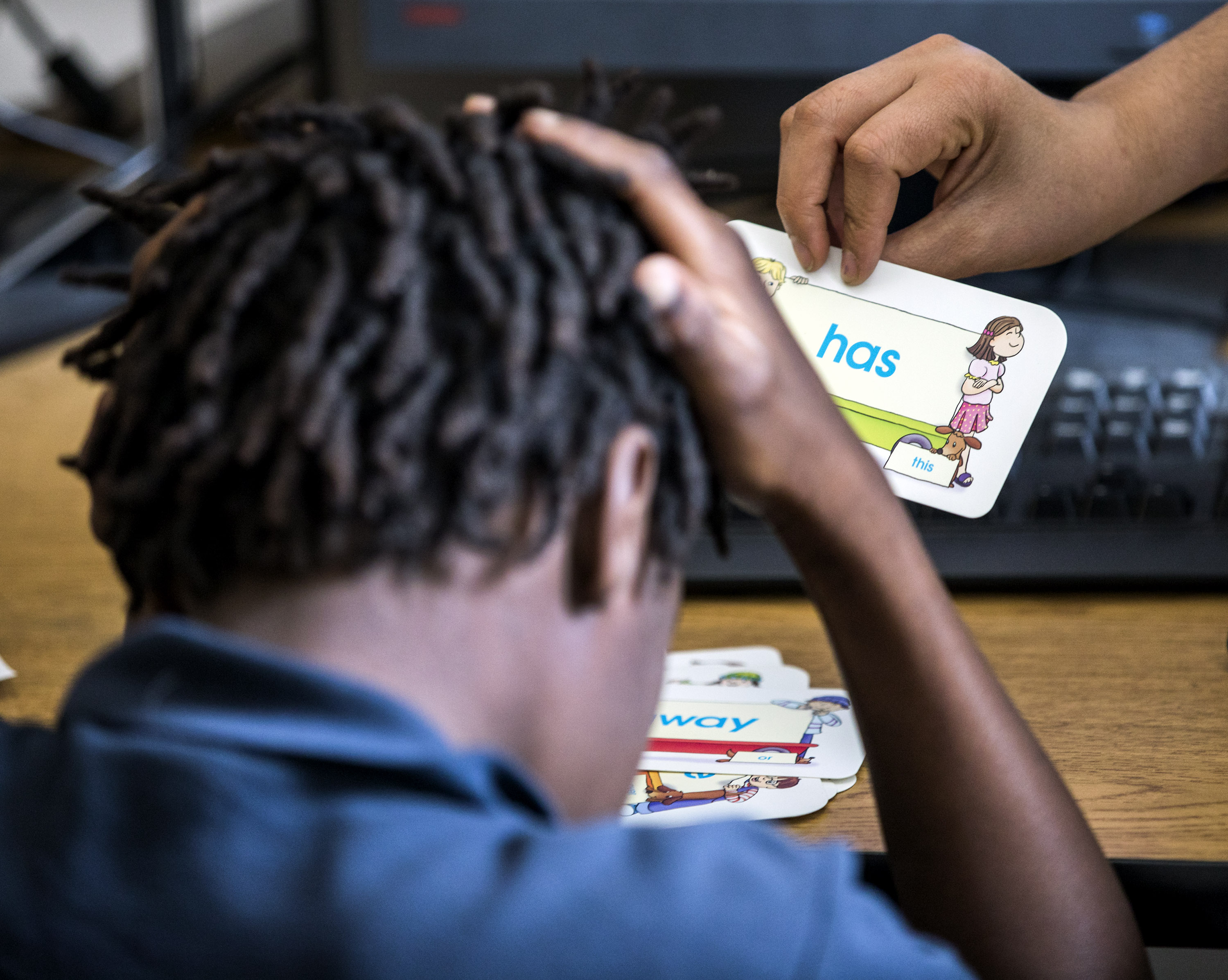
Jordan epitomizes the struggles teachers face with students dealt the roughest hands in life — learning challenges compounded by turbulent home lives. In Jordan’s case, teachers determined he fared better with small-group or one-on-one instruction, so they altered his individual education program, which is the academic plan developed for students who receive special-education services. The change enabled Jordan to spend more time in Tracey Kennedy’s resource room, where staff members try their best to boost his reading and math skills.
His classroom defiance — perhaps fueled by academic frustrations — contradicts the fifth-grader they observe meandering the school’s hallways. Jordan once encountered a kindergartener sprawled on the floor in a full-blown meltdown. He stopped and encouraged the child to stand up.
“You want to make good choices, right?” Jordan’s teachers recalled him telling the kindergartener.
Then he walked away, shaking his head and muttering “little ones.”
But on this day, in early May, Jordan is the student who’s not making good choices. As Gonzalez struggles to engage him in a reading lesson, Kennedy walks over to the pair. The 54-year-old’s calm voice — tinged with her native New Zealand accent — captures Jordan’s full attention.
“It’s time to work,” she tells him.
But she gives him another option: He can join the other students who are writing poems for Mother’s Day cards. Kennedy asks if he’d like to make a card for his brother’s girlfriend, Lauren.
Jordan declines. He resumes the reading lesson instead.
Two weeks later, he’s sporting a button-down shirt, plaid tie and khaki cargo shorts for his fifth-grade promotion ceremony. His brother, Trenton, and Lauren whoop and holler when Jordan walks across an outdoor stage to receive a medal and certificate recognizing his completion of elementary school.
Next year, he’ll be in a self-contained classroom for special-education students. Kennedy hopes that’s a better fit for him as he transitions to the new environment. Even so, she worries students like Jordan will get lost in the shuffle of the middle-school setting, so she slips his older brother her phone number. Just in case.
“My students don’t have the skills to advocate for themselves,” she says.
But on a balmy Thursday morning, their collective fears fade for a moment as Jordan enthusiastically greets Trenton and Lauren. Trenton, who graduated in 2017 from Desert Rose High School and is looking for work, pats his younger brother on the shoulder.
“I told you, ‘you gotta be good if you want to be somebody,’” he says.
The graduation ceremony over, the trio depart, ending Jordan’s tenure at Sunrise Acres.